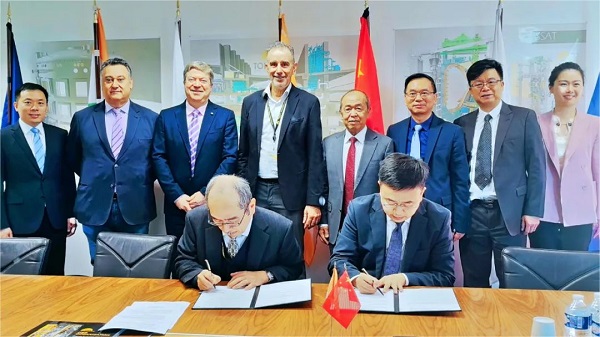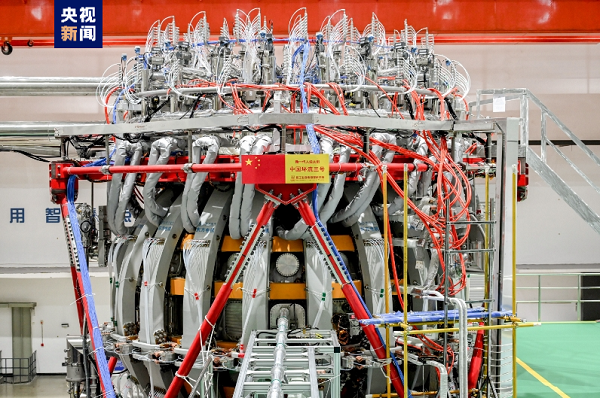The new-generation "artificial sun" HL-3 is open to world exploration
On Dec 14th, in Cadarache, France, the Southwestern Institute of Physics (SWIP) of China National Nuclear Corporation (CNNC) signed an agreement with the International Thermonuclear Experimental Reactor (ITER) headquarters, announcing that China's self-developed Huanliu-3 (HL-3), the new-generation "artificial sun", was open to the global community. They invited scientists worldwide to come to China and collaborate to pursue the dream of the "artificial sun". The director-general of the ITER Pietro Barabaschi, the deputy director-general of the ITER Luo Delong, the deputy director general (Science and Technology) of the ITER Yutaka Kamada, and the director of the SWIP Liu Ye represented both parties in signing the agreement.

The HL-3 is currently the largest-scale scientific apparatus of nuclear fusion with the highest design parameters in China, also known as China's new-generation "artificial sun". In August 2023, the HL-3 realized high-confinement mode operation with a plasma current of one million amperes, marking the operational level of China's magnetic confinement nuclear fusion device at the forefront of the world.

Over the years, the SWIP has been deeply involved in the development of key components for the ITER, overcoming multiple engineering and technical challenges. It has accumulated rich experience in the construction, debugging, operation, and maintenance of nuclear fusion devices, laying a solid foundation for China to absorb international advanced technology and build China's nuclear fusion reactors. Due to the similarity in experimental principles, China's HL-3 not only allows for concentrated efforts on key technical issues of the ITER but also contributes to enhancing China's research and development capabilities and fostering talent.
The director-general of the ITER Pietro Barabaschi expressed anticipation for China's HL-3 as a forward-looking global open platform and introduced updates and challenges of the ITER project. He also emphasized the longstanding and strong cooperation between the ITER and the SWIP, stating that both parties could strengthen collaboration in relevant scientific and engineering fields based on the implementation agreement of deepening strategic cooperation and promote the development of the global fusion endeavor.
- China Institute of Atomic Energy
- Nuclear Power Institute of China
- Southwestern Institute of Physics
- China Nuclear Power Operation Technology Corporation, Ltd.
- China Nuclear Power Engineering Co., Ltd.
- China Institute for Radiation Protection
- Beijing Research Institute of Uranium Geology (BRIUG)
- China Institute of Nuclear Industry Strategy (CINIS)
- China Nuclear Mining Science and Technology Corporation


